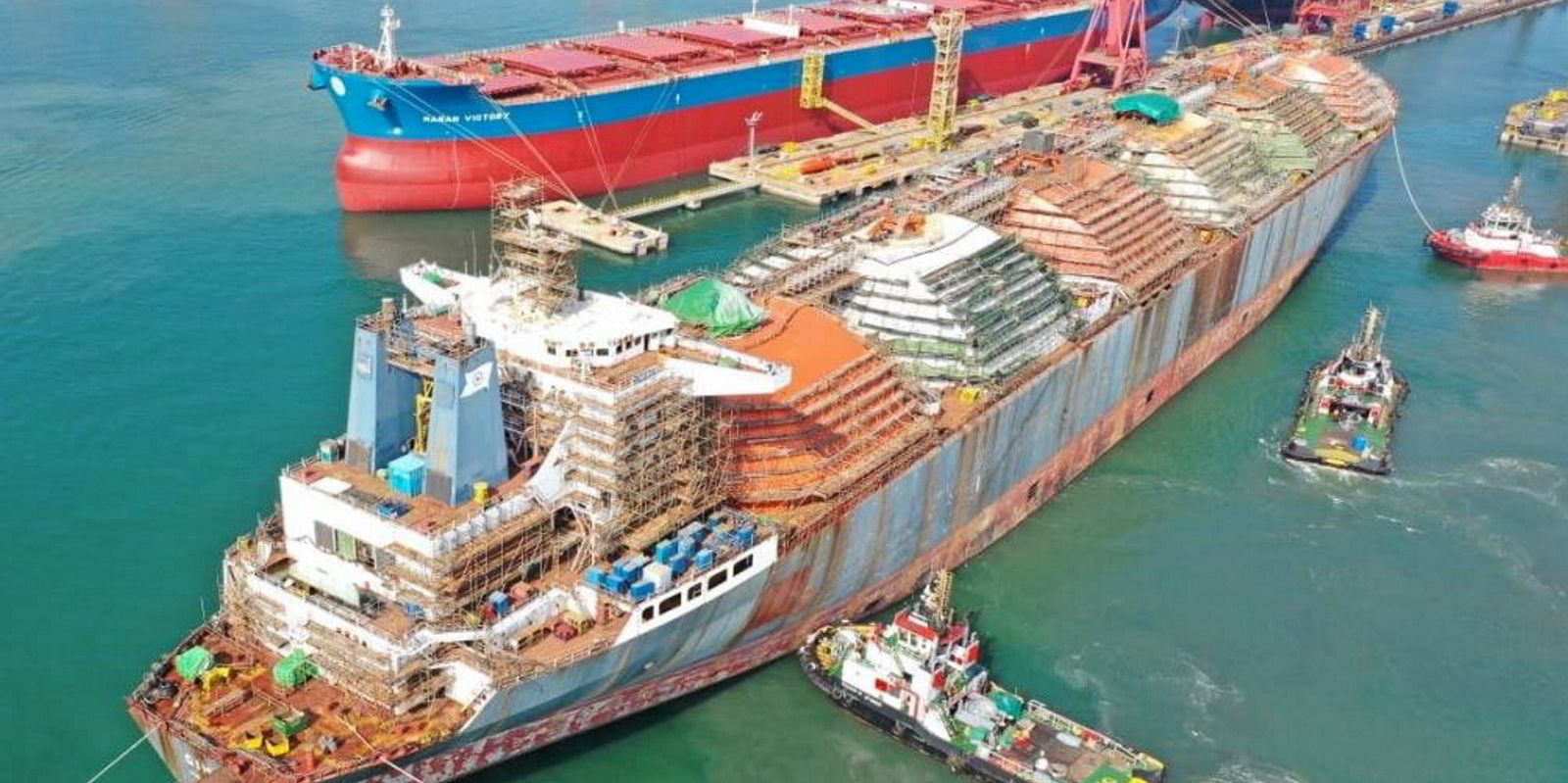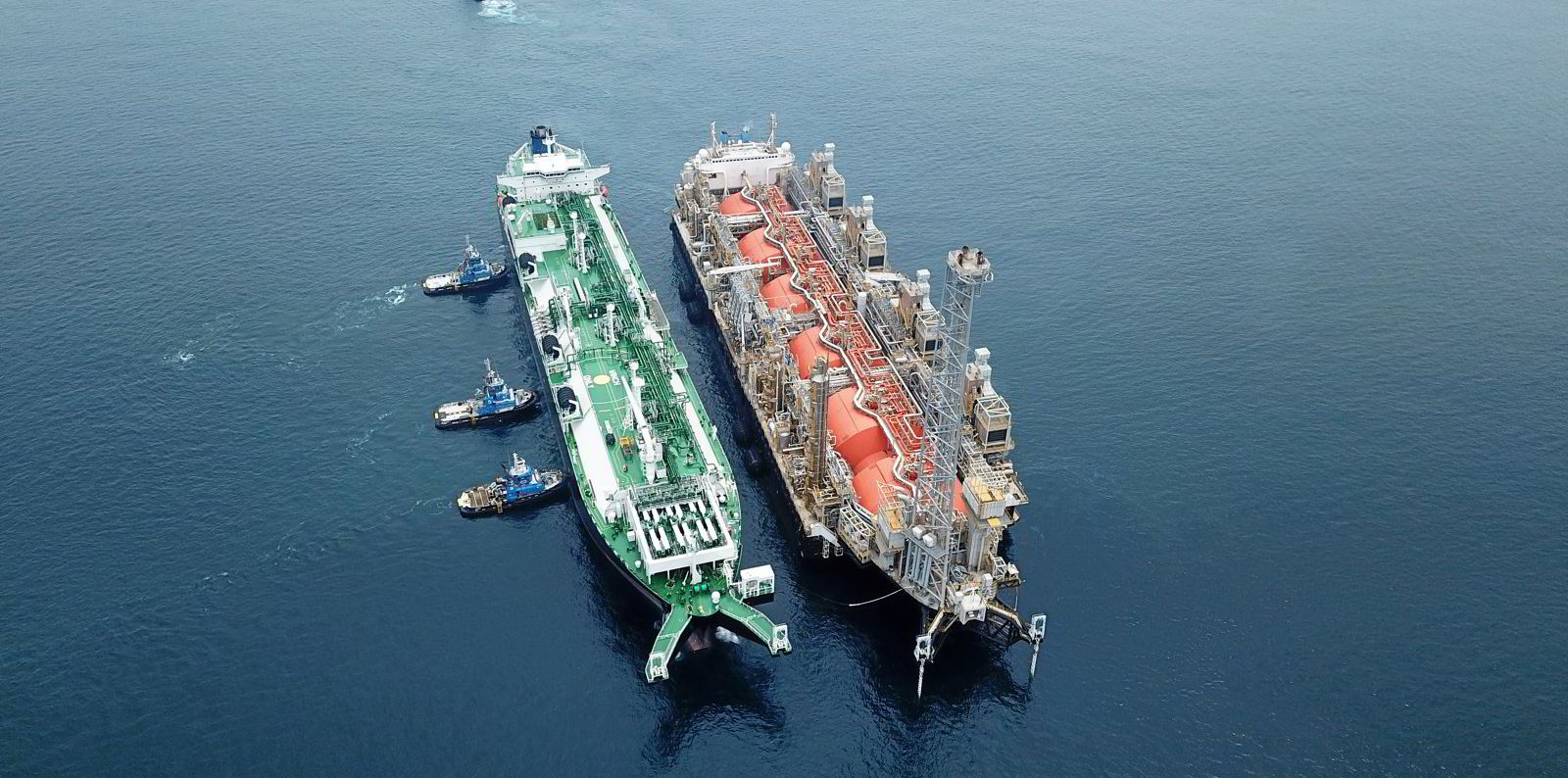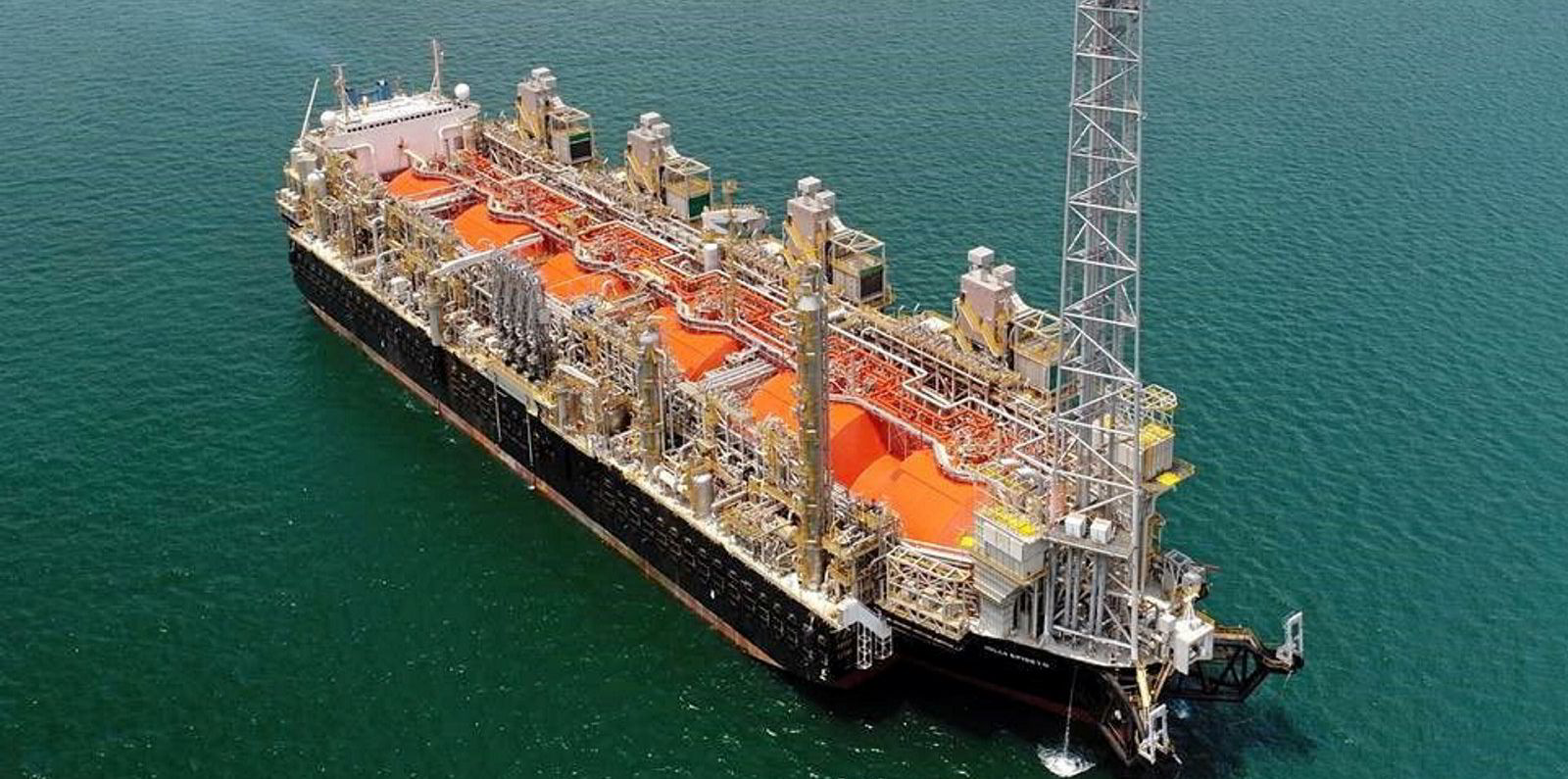Tor Olav Troim-led Golar LNG and its partner Singaporean partner Keppel Capital in a floating LNG (FLNG) production unit for BP are paying Keppel Shipyard a $50m incentive payment to ensure the floater delivers on time.
In its second-quarter results statement, Golar said the conversion of the 126,000-cbm LNG carrier Gimi (built 1976) into a 2.3 million tonnes per annum FLNG unit — which is fixed on a 20-year contract with BP to monetise its Greater Tortue Ahmeyim gasfield project on the maritime border of Senegal and Mauritania — is 86% complete.
The unit’s development partners will pay the yard $50m for “initiatives to safeguard the sail away” within the first half of 2023, of which $35m will be for Golar’s account. Golar owns 70% of FLNG Gimi.
In October 2020, Golar and BP agreed on an 11-month extension to the delivery date on the unit that had originally been scheduled for 2022, after BP made a force majeure claim on FLNG Gimi in April 2020 in the wake of the Covid-19 pandemic.
Troim’s newly FLNG-focused company said today that $107.3m was invested in FLNG Gimi during the quarter, increasing the total asset under development balance at the end of June to $1.1bn.
The project was originally costed at $947m.
Golar said it had “multiple new client engagements” during the quarter on FLNG.
The company confirmed yard availability and updated the pricing for both its Mark 1 and Mark II LNG floater designs and is “in discussion” over its Mark III version.
“Indicative pricing suggests a capex [capital expenditure] per ton of liquefaction capacity of between $500-$600 million/ton,” Golar said.
The company pitched that both its Mark I and II designs can be delivered in 2025 if ordered this year.
“Competitive construction and long-term lease financing term sheets for FLNG growth projects have been received,” the company said.
Golar added that it is planning to order long-lead items during the second half of this year for a MKII design FLNG, with a liquefaction capacity of up to 3.5 million tonnes per annum.
“A suitable conversion candidate vessel has been identified and inspected,” the company said, adding that it is still targeting an FLNG project announcement within the year.
Golar said its agreement to sell its 140,000-cbm LNG carrier Golar Arctic (built 2003) to Italy’s Snam for €269m ($279m) resulted in an impairment charge of $76.2m as the carrying value of the vessel exceeds its fair value.
The ownership of the vessel, which is to be converted into a floating storage and regasification unit, is not expected to transfer for up to three years, and Golar added that the deal is expected to generate net positive cash and a gain on sale upon completion.
During the quarter, Golar also sold its 170,000-cbm FSRU Golar Tundra (built 2015) for $350m to Snam.
After repayment of vessel debt and fees, Golar said it received net proceeds of $193.1m in cash.
The company has agreed to lease the vessel back from Snam and trade it as an LNG carrier until November 2022.
Golar halved its second-quarter net income down to $230m from $471.4m in the same period of 2021.
Total operating revenues inched higher up at $67.2m from $65.3m a year earlier.
Golar slashed its contractual debts to $1bn for the quarter, down from $1.7bn in the first three months of this year and from $2.2bn in the same period of 2021.
The company said it entered into swap arrangements during the quarter to hedge around 50% of its exposure to TTF [Dutch Title Transfer Facility]-linked LNG production for 2023. “Golar’s share of 2023 TTF linked gross proceeds from the TTF linked volume is expected to be $160m,” the company said.
But Golar lost out both on the sale of its shares in New Fortress Energy (NFE) and its remaining NFE stock when their price fell during the quarter accounting for most of the $45.1m of other non-operating losses logged during the three months.







